The Cube Compendium is a six-part series discussing both the philosophies of Cubing and Cube design, and the construction of my personal Cube.
Table of Contents:
Part One
: The Basics of Cube Drafting and Important Design Questions
Part Two
: Important Design Answers and The Factors of Good Cube Design
Part Three: White and Blue
Part Four: Black and Red
Part Five: Green and Multicolored
Part Six: Colorless, Lands, Wrap Up, and Full Cube List
* * * * *
Colorless – 70 Cards
The colorless section of my Cube is where you will see the widest deviation from most other Cubes. While there are plenty of big mana cards and utility
artifacts, my Cube also supports a more aggressive affinity/robots style deck as well. This leaves the section much like a sixth color, with the ability to
support the full range of decks from aggro to control/prison.
This may seem difficult to accomplish with only 70 cards, as many normal decks are going to want many artifact cards just because they are good. This is
true, but there are actually quite a few artifacts scattered throughout all of the colors:
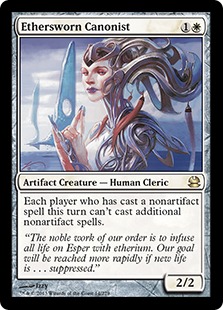
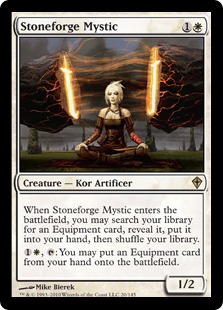
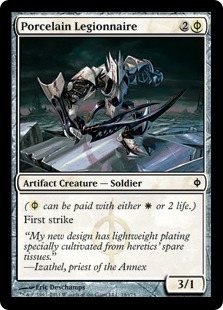
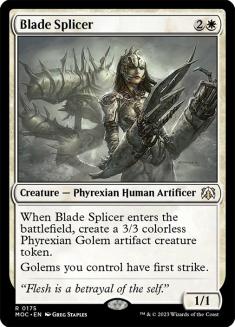
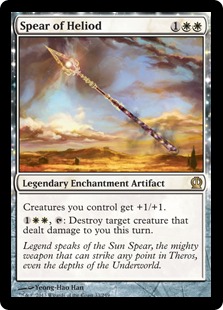
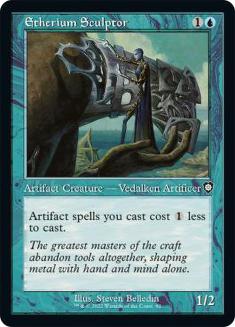
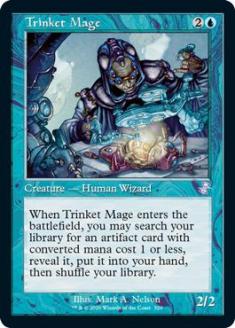
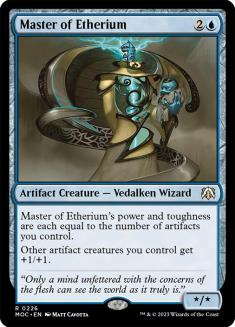
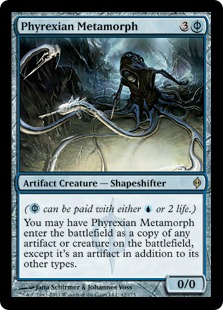
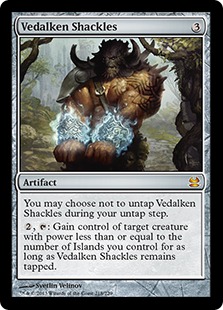
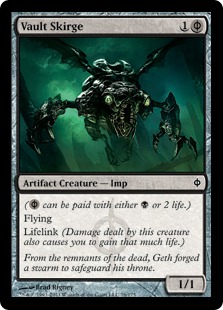
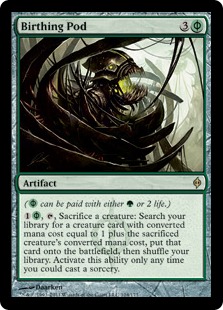
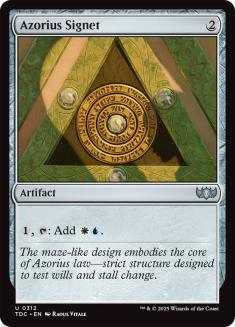
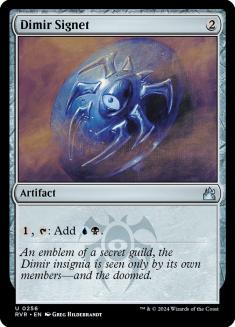
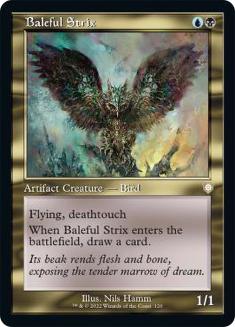
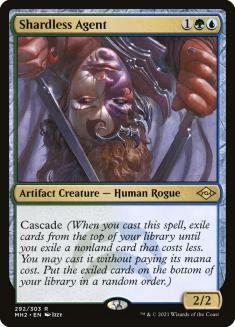
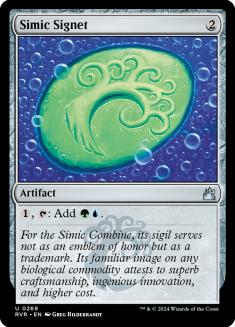
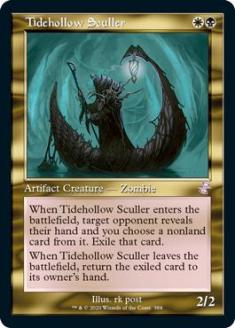
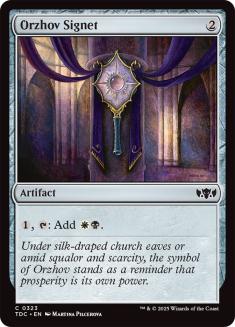
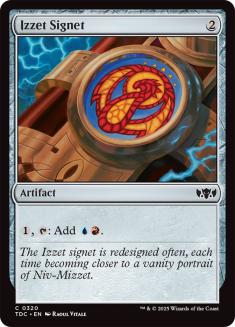

All of these cards either are artifacts or directly produce an artifact like Blade Splicer or Trinket Mage. That’s an additional 20 artifacts for the
cause, and this isn’t including the artifact lands or other artifact friendly cards like Myrsmith, Shrapnel Blast, and Tezzeret, Agent of Bolas. Most of
these cards are also perfectly reasonable cards, and this amount of incidental support is what makes the variety of artifact decks possible.
The inclusion of conspiracy-draft cards like Lore Seeker, Agent of Acquisitions, and Deal Broker is also awesome, as aside from being very fun cards to
draft with, they are all reasonably playable cards in a low to the ground, artifact-based deck.
The colorless section of the Cube also houses colorless cards, lands that don’t produce mana, and conspiracies.
Creatures – 22
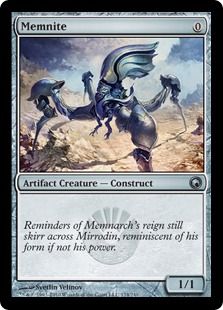
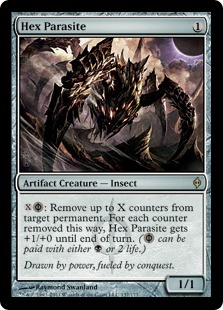
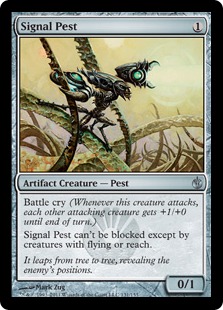

Memnite weighs in as the artifact deck’s Firedrinker Satyr, as only the really aggressive decks are going to want it, but it’s not inconceivable that
someone’s very aggressive non-artifact deck could play it. Hex Parasite is also not extremely exciting, but does a number of interesting things while
filling out the curve. There are a lot of things with counters in the Cube, and it creates some interesting situations.
Signal Pest is great because while it’s awesome in the artifact aggro deck, it is also fine in other decks and actively great in token decks.
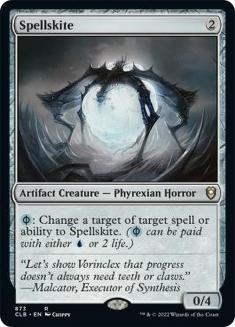
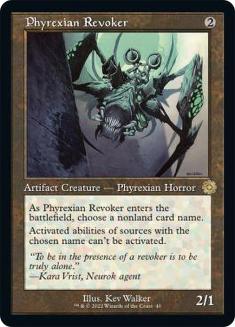
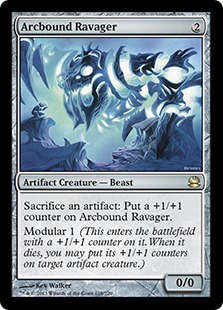

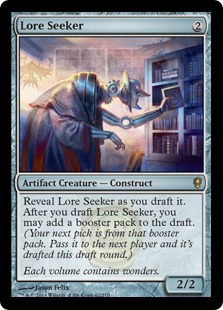
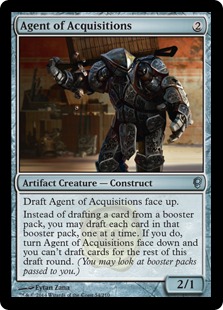

Spellskite and Phyrexian Revoker are both great cards that fit well into the artifact theme, while Arcbound Ravager and Steel Overseer ask for more but
also give back more as two of the best payoffs for being an aggressive artifact deck.
As stated earlier, Lore Seeker and Agent of Acquisitions are both in the Cube for what they do to the draft itself, but they are perfectly serviceable as
beaters in an aggressive artifact deck. This is great because it helps the aggressive artifact drafter hit the critical mass of artifacts necessary.
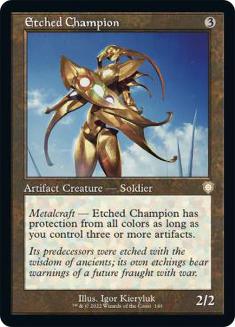
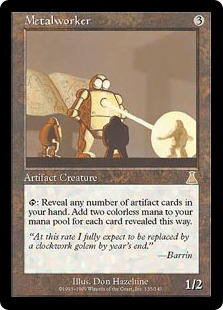
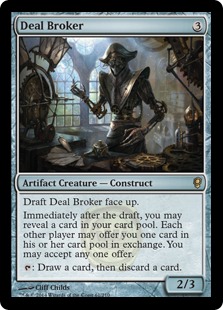


Etched Champion is another big payoff card that’s also fine in more traditional artifact decks, while Metalworker is always very powerful. Deal Broker is
very fun, and also the most playable of the conspiracy-draft cards as a reasonable looter.
Zombie Cutthroat looks a bit odd, but it is included to back up the minor morph theme in blue, green, and red. Pretty much every morph in the Cube (Stratus
Dancer, Sagu Mauler, Ire Shaman, Icefeather Aven, Dwarven Blastminer) is a card that you want to kill on sight, and without some sort of variation to keep
them honest, your opponents know they can always attack into or Lightning Bolt them fairly before they can flip properly. Zombie Cutthroat throws a total
wrench in that plan, and its existence creates doubt and interesting gamestates. Three mana and five life for a 3/4 creature isn’t that far off curve, so
it’s still playable in other decks as well.
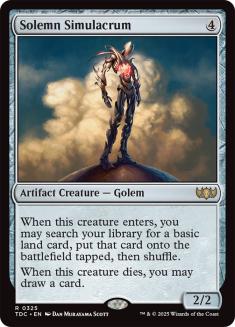
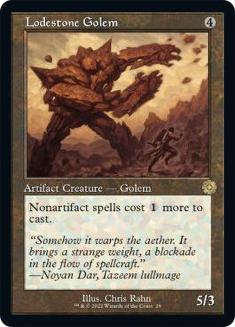
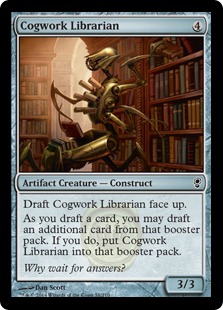
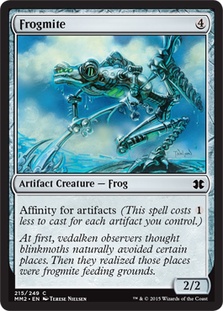

Solemn Simulacrum really needs no introduction, and Lodestone Golem is quite amazing in aggressive and prison decks. Frogmite is another Jackel Pup type
card for the aggressive artifact decks; no other deck is really going to want it, but it provides a quick and free beater.
Cogwork Librarian doesn’t have the luxury of being castable like the other conspiracy-draft cards, but it is probably the best of the bunch and can often
be first picked.
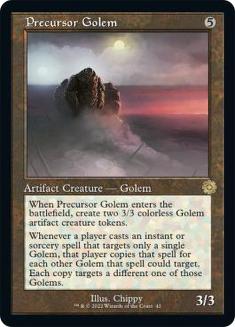
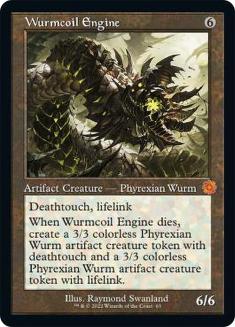
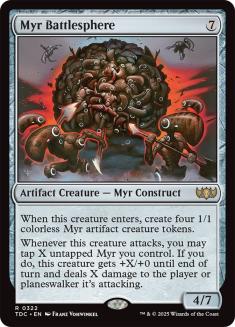
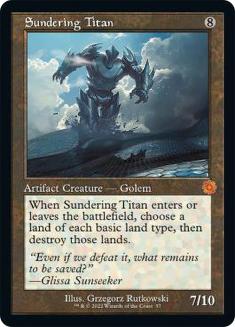
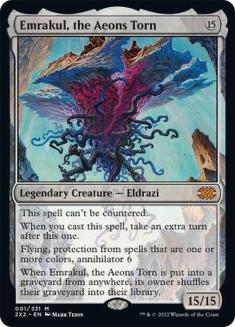

Precursor Golem is awesome. Nine power over three bodies for five mana is great, it helps turn on artifact synergies and makes for crazy, wacky games when
targeted with odd spells. Wurmcoil Engine is obviously absurd, and Myr Battlesphere and Sundering Titan are very castable and the Cube’s best Tinker
targets.
Emrakul, the Aeons Torn is a very polarizing card, as not many decks will want it, but the ones that do will really want it. I like having exactly
one of this effect, as it makes it unique and difficult to find.
Equipment – 7 Cards
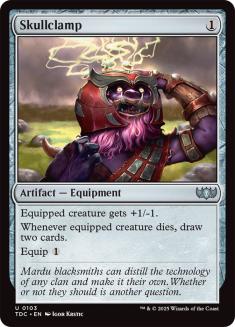
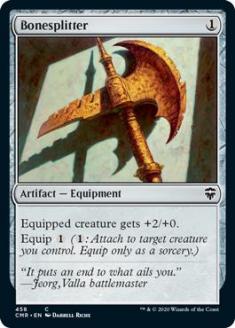
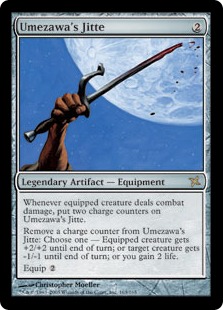
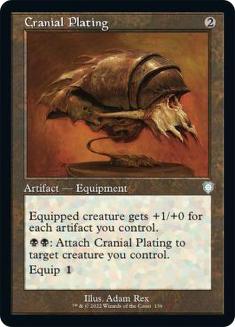

Skullclamp and Umezawa’s Jitte are quite obviously absurd. Bonesplitter is much more modest, but it’s a good early drop in the aggressive artifact deck
that is also playable pretty much anywhere.
Cranial Plating is one of the artifact deck’s biggest payoffs, and it is just as absurd in the right Cube deck as it ever was in affinity.
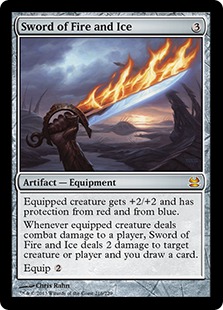
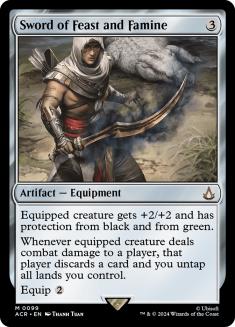
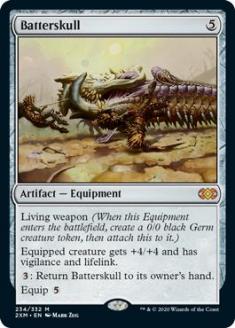

If you remember well, early in this series I expressed my distaste for protection effects in the Cube. It is very frustrating to be playing a red/blue deck
and have your opponent play a Sword of Fire and Ice. However, because Sword of Fire and Ice and Sword of Feast and Famine are both very interesting and
powerful cards with excellent triggers, I have decided to allow them both. Both green and red have ways to deal with artifacts, and red and black have the
cheapest removal in the Cube.
Batterskull is also an obviously absurd card.
Mana – 14 Cards
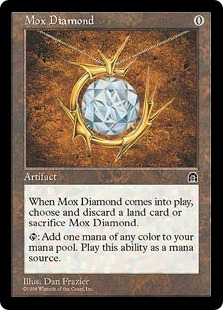
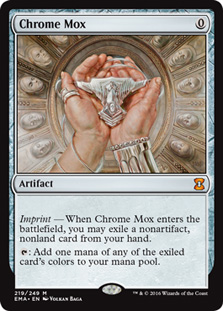
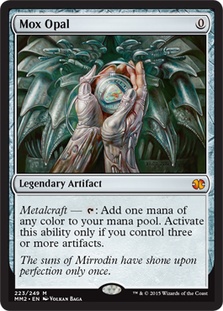
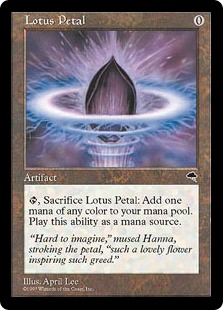
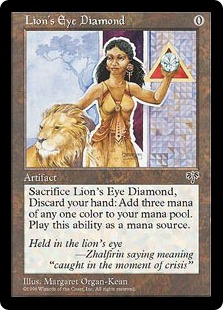
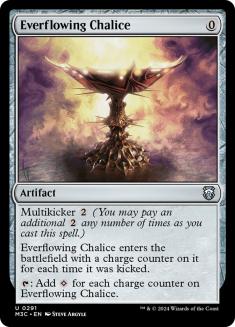

While there’s no truly broken fast mana in my Cube like Sol Ring or Mox Pearl, there is still an assortment of the fastest fair mana available. Mox Diamond
and Chrome Mox both have significant drawbacks but are awesome, and Mox Opal is another awesome artifact payoff card.
Lotus Petal and Lion’s Eye Diamond are much more combo-orientated, and Everflowing Chalice is always solid.
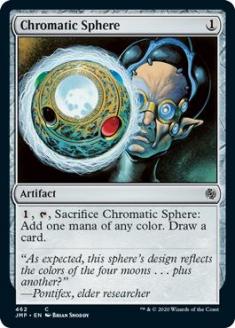
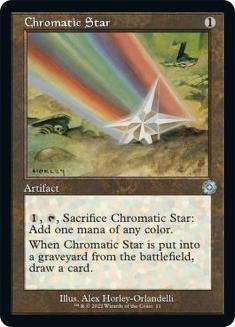

One of the sections of my Cube I’m very proud of, Chromatic Star and Chromatic Sphere do a lot of the little things that make my Cube work. Aside from
providing deck velocity and smoothing, they also are fantastic cogs in both the artifact deck and the storm deck. Both cards have various Pro Tour top 8s
in various decks and formats and perfectly illustrate that not every card in a Cube has to be a Wurmcoil Engine or a Jace, the Mind Sculptor. Some cards
are just excellent support cards and help to turn a pile of cards into a deck.
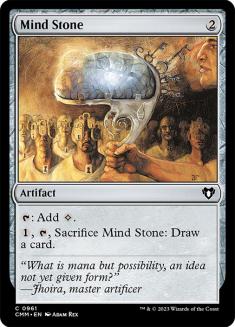
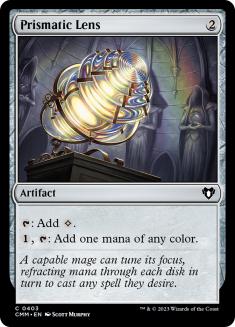
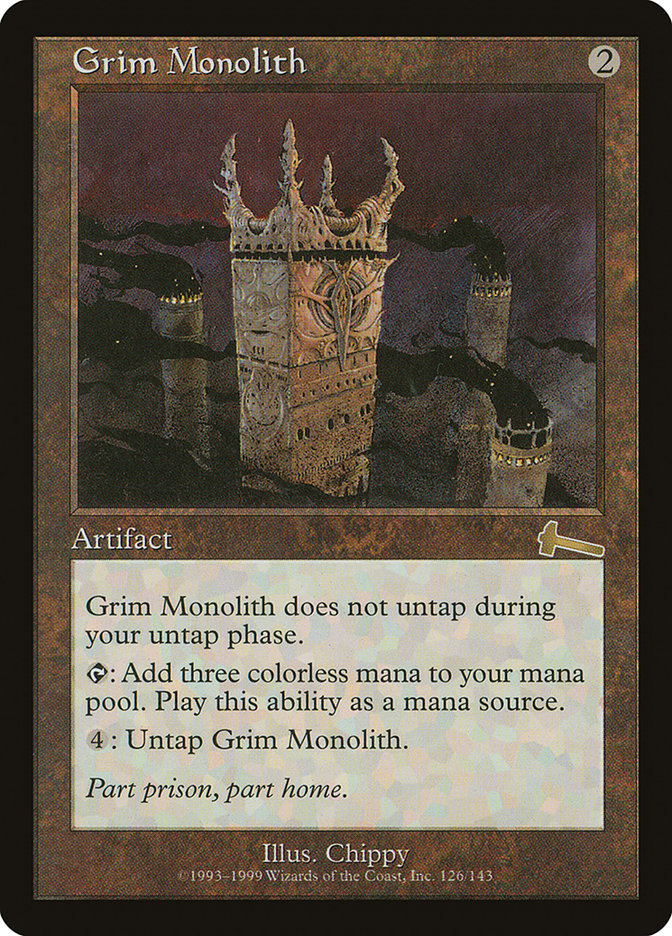

Not every color gets a Signet, but there are still a few mana rocks like Mind Stone and Prismatic Lens if you really need them for your green/red Wildfire
deck.
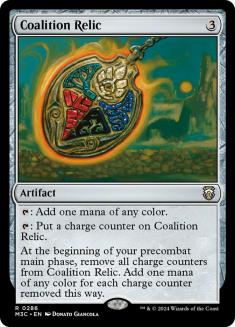
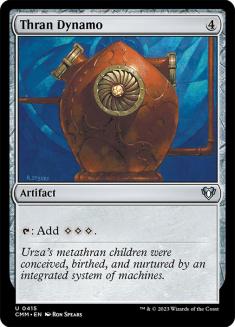
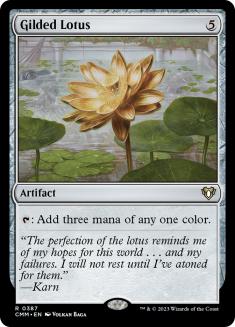

Fast artifact mana is awesome and can support artifact decks, control decks, or whatever you really want to be doing.
Artifacts – 19
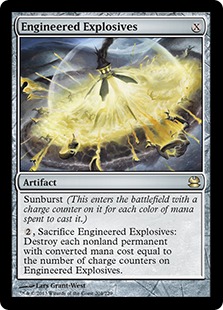
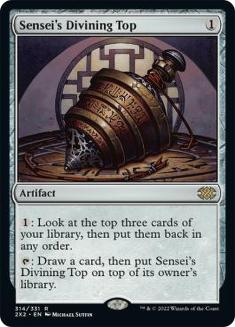
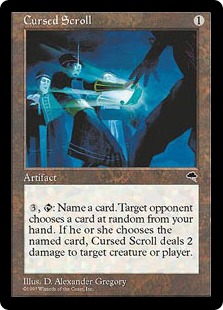
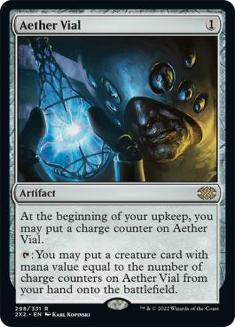
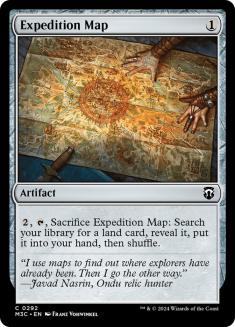
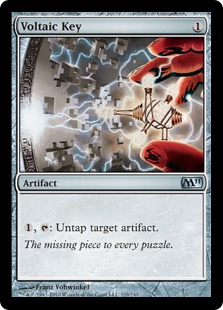

All of these cards have seen major tournament play over the years, and with just cause. They serve many different purposes, but they are all fairly
versatile. Aether Vial and Cursed Scroll are good additions to the aggressive artifact decks.
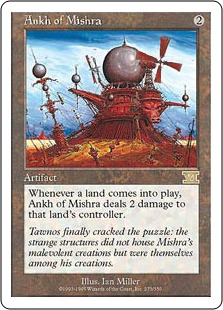
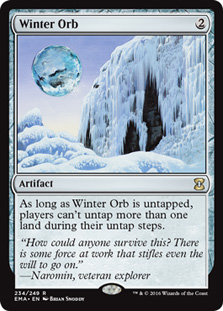


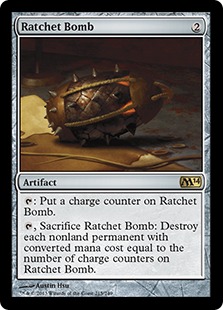
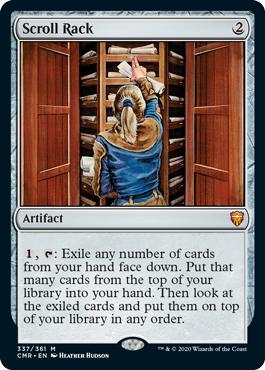
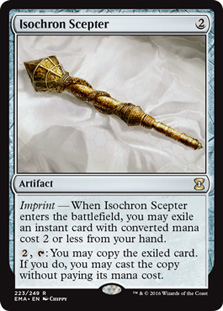
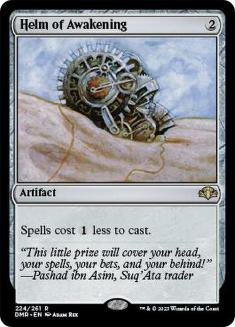

I stated earlier that you can’t really afford to durdle around in my Cube, and here is a big reason why. Aggressive starts backed by Ankh of Mishra, Winter
Orb, or Sphere of Resistance are very tough to beat, and cards like Isochron Scepter and Scroll Rack can grind you out as the game goes on.
Helm of Awakening is a great combo card, as being a Sapphire Medallion for all spells makes storming off a breeze.
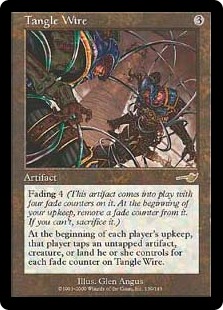


Tangle Wire is absurd, and at it’s absolute best in the aggressive artifact deck where you can tap a few random equipment or early artifacts.
Crucible of Worlds is an awkward card, but it helps to support the land decks. The obvious combo is to return Strip Mine or Wasteland, but it can do a bit
more than that in prison decks as well.
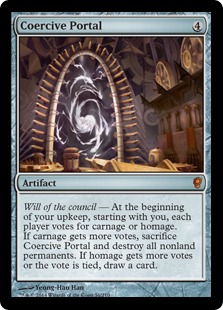

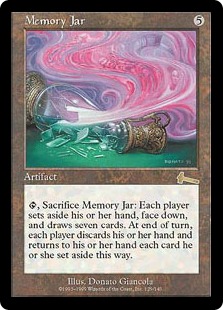
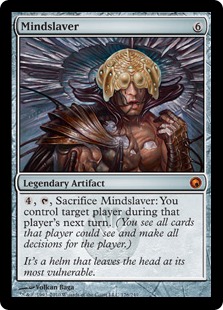

Coercive Portal is an awesome one, as it is essentially just a one-sided Howling Mine that can be cast very quickly with fast artifact mana.
Smokestack is great for prison and aggressive decks, Memory Jar is for combo decks, and Mindslaver is one of the most fun cards ever printed.
Miscellaneous – 8 Cards
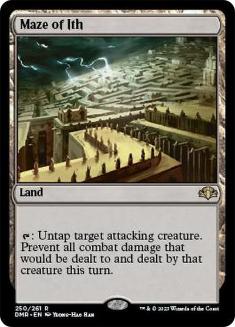
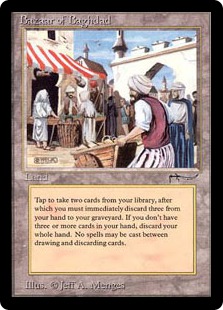
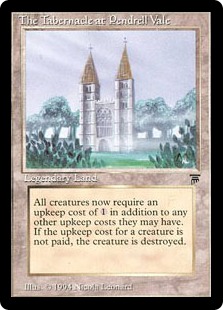

The lands that do not tap for mana end up in the colorless section, which isn’t really that big of a deal either way logistically. Maze of Ith and The
Tabernacle at Pendrell Vale are very powerful cards that help support a Lands-style deck, while Bazaar of Baghdad is a Legacy banned card for graveyard
decks.




I am always somewhat stingy with planeswalkers in my Cube, but for now, both extremely powerful colorless entries are in. There’s no doubting their power,
but I worry a bit that with all the fast mana casting Ugin on turn 3-4 will just be unbeatable.
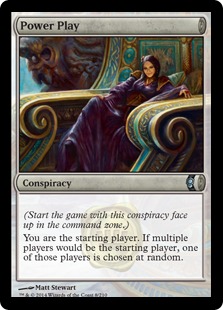
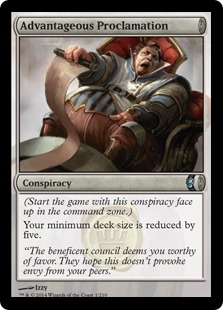
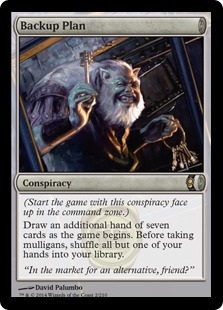

The most hotly contested portion of my Cube is the trio of conspiracies. Advantageous Proclamation is pretty reasonable, but both Backup Plan and Power
Play are absurdly powerful. They are both fun, with Backup Plan giving some extra juice to the combo decks, but it’s very possible that it’s incorrect to
ever pass them.
If that’s the case and they actually don’t present an interesting choice because it’s almost never correct to pass them, they are probably just too strong
for the Cube. More testing is needed.
Lands – 88 Cards
The lands section of my Cube is larger than most, as I think that having good mana and interesting utility lands is of paramount importance. Cube decks are
supposed to look like Constructed decks, and Constructed decks very rarely contain primarily basic lands. Non-basic lands are awesome, and it is a Cube
goal to give everyone access to interesting ones.
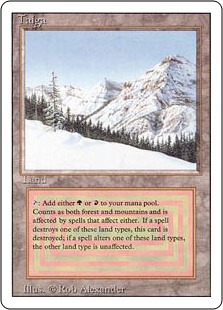
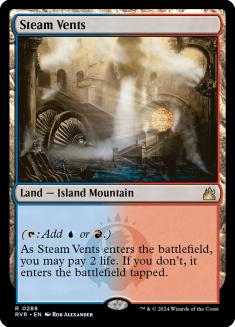
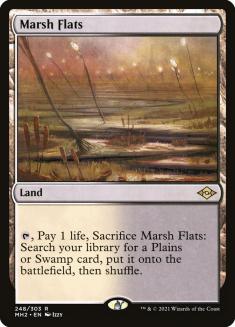

Not much explanation is required for the full bevy of original duals, shocklands, and fetchlands, as they represent the pinnacle of manafixing in the Cube.
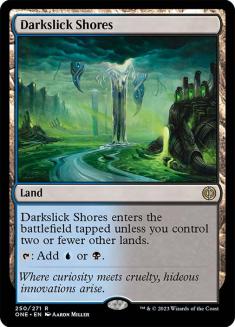
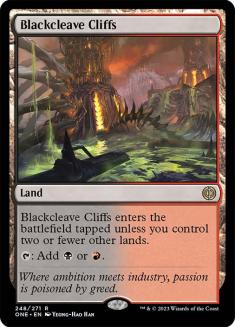
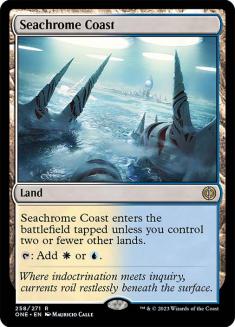
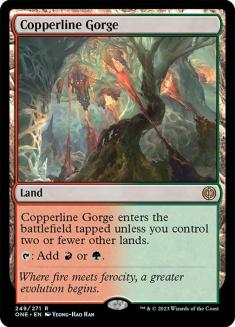
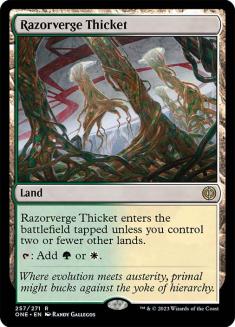
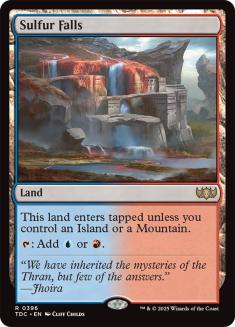
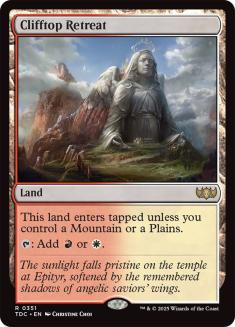
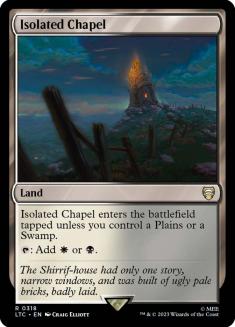
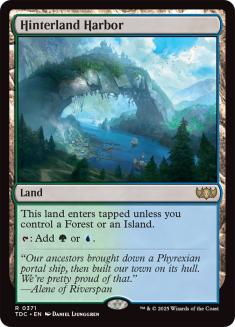
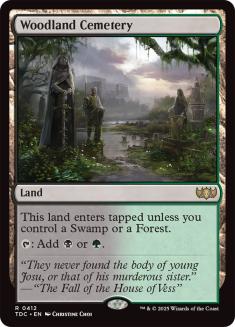

A combination of the Scars of Mirrodin fastlands joins the enemy buddylands to form the fourth cycle of non-basics in the Cube. The fastlands are
some of the best duals ever printed, and the enemy-colored buddylands fill the void left by there only being five fast lands.
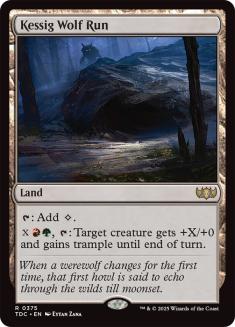
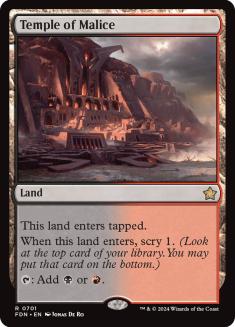
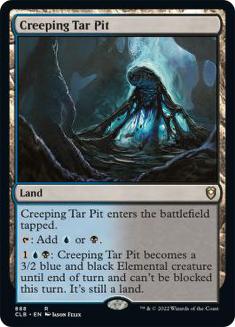
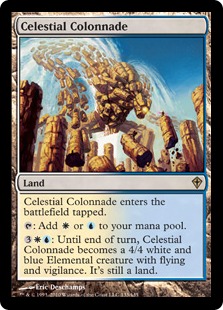

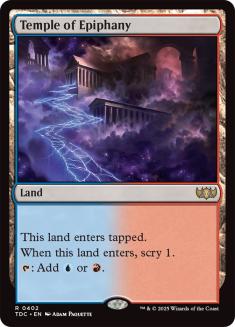
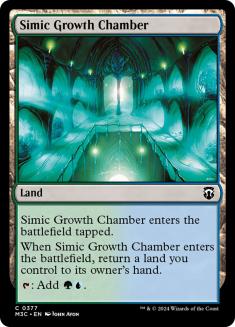
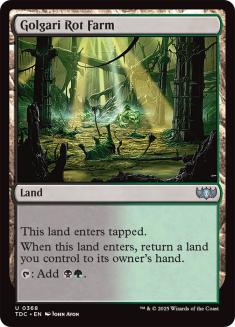
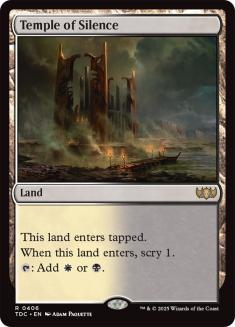
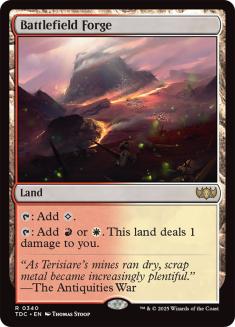

The fifth cycle is by far the most interesting.
One of the issues with doing the land section of the Cube is that it needs to be balanced. However, there are large cycles of lands that have one or two
standouts and a bunch of dudes. Nobody wants Lavaclaw Reaches or Grim Backwoods in their Cube, but Creeping Tar Pit and Kessig Wolf Run are awesome.
My solution is to have one wild-card land for each color pair. This allows us to put in a few of the best manlands, a few bouncelands in the colors that
want them, some Temples, and so on. Just like blue/white doesn’t really want a painland, red/white doesn’t really want a bounceland. By doing it this way
we can have all the best parts of many of these cycles without being slave to the entire set.
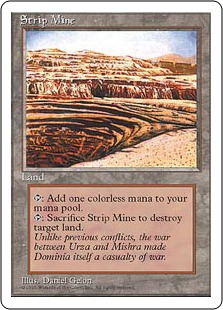
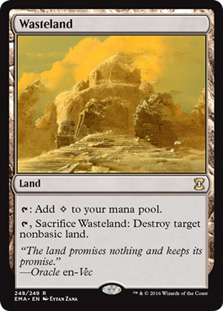
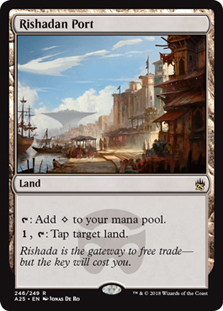
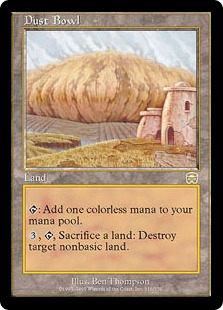
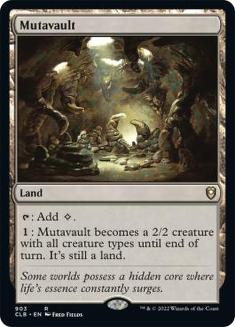
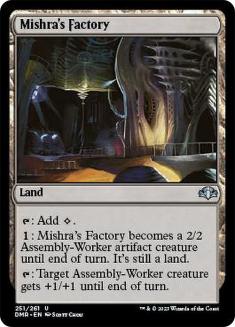
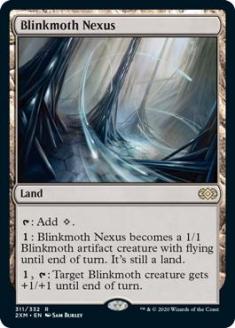
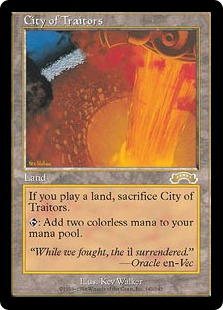

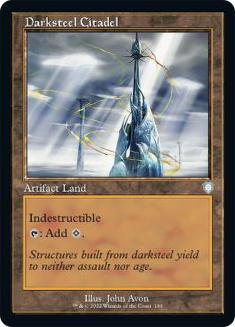

The colorless land section of the Cube contains some of the most important cards for aggressive decks and combo decks.
The four mana-denial lands are major players in both aggressive decks and mana denial decks. They’re hugely important. Three man-lands supplement the
aggressive decks and help to fuel Lands-style decks. Lastly, City of Traitors and Ancient Tomb help push the more broken decks while Darksteel Citadel
joins its friends to help the artifact theme.
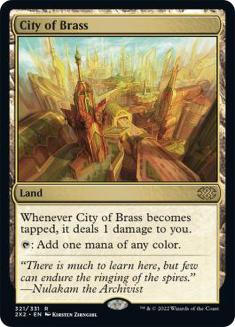
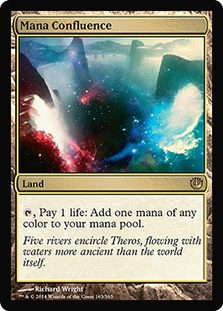
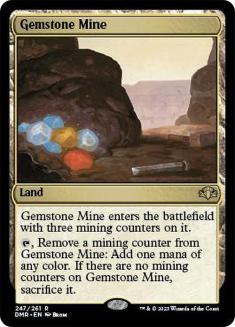

There are only three playable multi-color lands, but they are all very good and important to aggressive decks. This throws the numbers off a bit for the
section, but honestly, as long as things are balanced between colors, it’s not a problem.
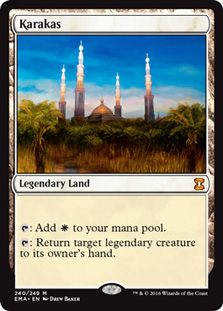
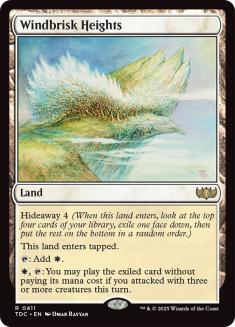
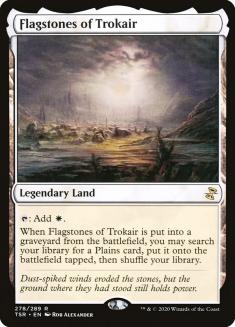
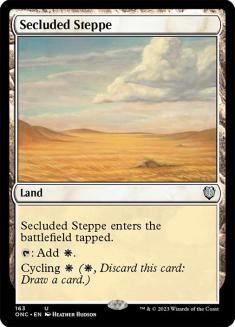
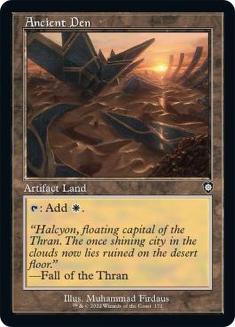

Each color has a section of five lands, with the last two being a cycling land and an artifact land. The cycling lands add some variety to manabases while
also going great with stuff like Life From The Loam. The artifact lands do excellent work both supporting the artifact deck and also allowing people to
splash artifact effects into normal decks.
Karakas was a card I considered too good for the Cube for a long time, but that was back in the day when cards like Kokusho, the Evening Star and Yosei,
the Morning Star were the premier finishers in the Cube. There are many fewer legendary creatures in the Cube these days, and there are a lot of cheaper
ones you want to play and bounce yourself.
Windbrisk Heights is just awesome in the token decks, and Flagstones of Trokair is great in prison decks.
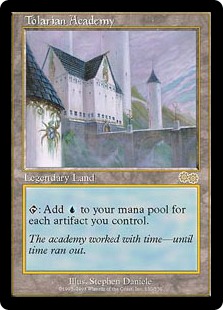
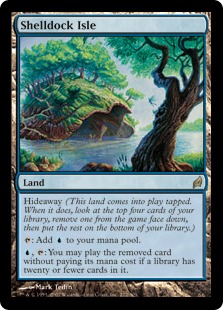
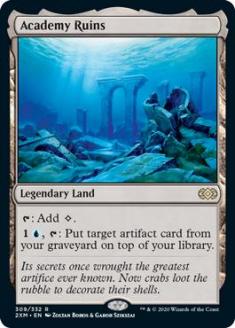
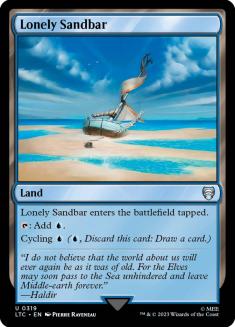
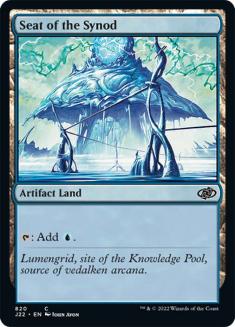

Tolarian Academy is one of the best cards in my Cube. With more artifacts to go around, it always taps for a ton, and it can power any artifact deck.
Academy Ruins is a bit more grindy but still powerful.
Shelldock Isle is also one of the most powerful lands in the Cube, as being able to cast an extra spell for free, ignoring all timing restrictions, is
absurd.
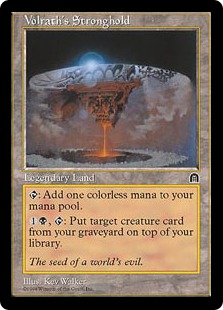
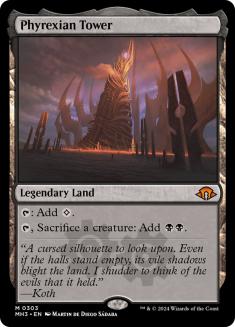
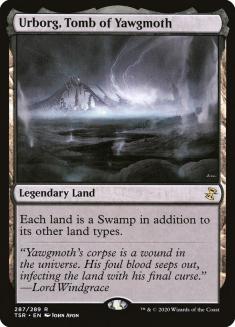
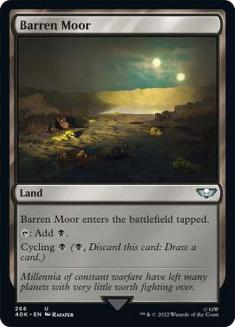
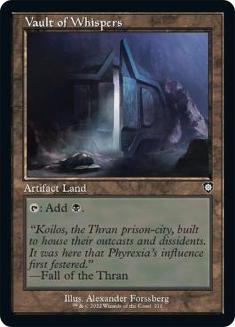

More grinding power in Volrath’s Stronghold, and Phyrexian Tower is absolutely awesome in token decks or decks with a sacrifice theme. Urborg, Tomb of
Yawgmoth is as good as it ever is.
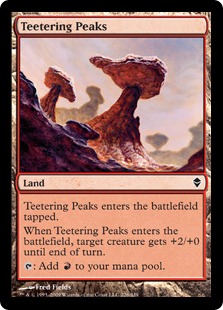
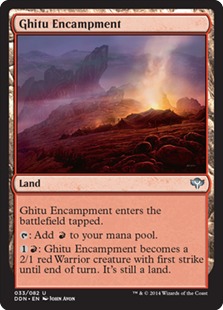
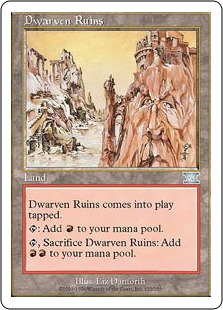

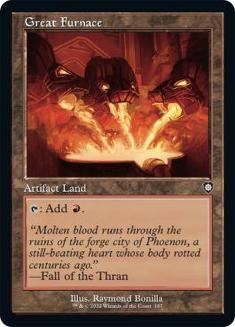

Teetering Peeks and Ghitu Encampment are great cards for aggressive decks and make sure you are getting good value out of your lands.
Dwarven Ruins requires a bit more finesse, as it works best in combo decks or decks looking for a quick one shot of mana to cast something huge.
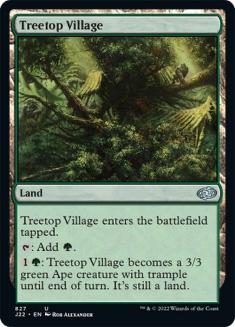
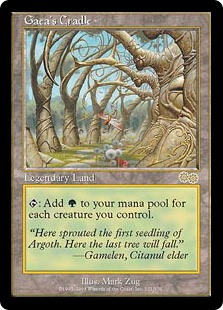

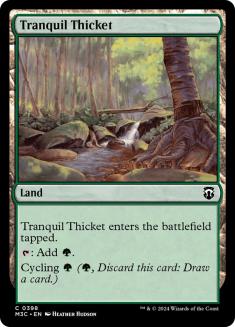
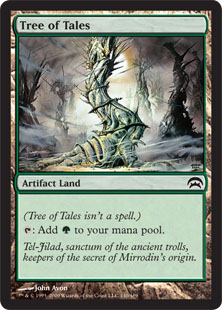

Treetop Village is one of the best man-lands around and a welcome addition to any normal green deck or a great piece of a lands deck. Gaea’s Cradle is
already a great card, but it works phenomenally in the artifact aggro deck as a source of gobs of colorless mana. Pendelhaven is powerful in token decks
and for some extra value.
Wrapping Up
There it is, all 473 cards. The best part about owning a Cube is that it is always changing and adapting. Even during the six weeks of writing this series,
I’ve made minor changes to the Cube, and I’m sure I will continue to make more as feedback comes in from all places. Already I’m considering cutting all of
the cycling lands and putting Tranquil Thicket in place of Pendelhaven and adding Galvanic Blast.
There’s no substitute for actually playing, and it’s important to be open-minded when it comes to making changes to your Cube. Have a crazy idea? Don’t
dismiss it! Just throw it in and fire off a few drafts and see how it sticks. Even if it doesn’t work, you will still learn more about your Cube, and of
course, you got to get a few drafts in as well.
View the Google Doc of the entire Cube.
My entire Cube is viewable in the above Google Doc, and comments are enabled, which allow you to comment on each individual card. I may import the Cube
into Cubetutor.com soon as well, but for now this is the current and definitive version of my Cube.
We end The Cube Compendium with a new beginning…
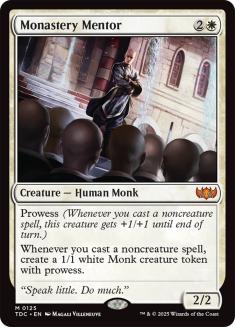
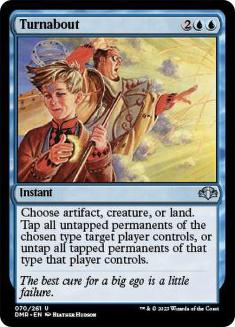

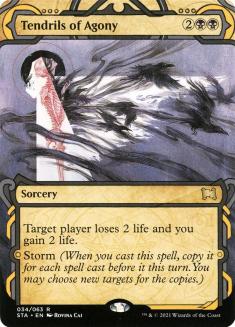


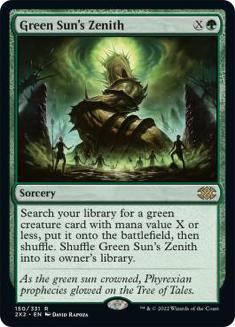
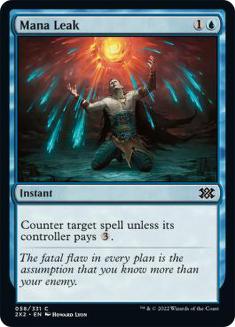

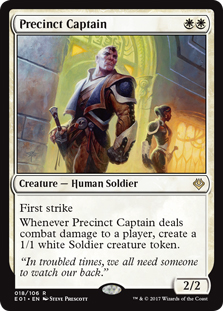

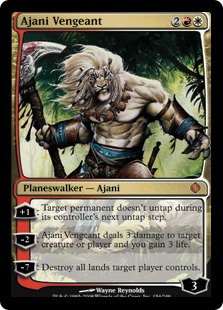

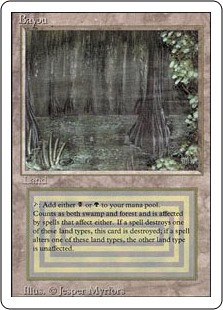


A brand new day, a brand new Cube draft. Pick one, pack one: What’s your pick?
